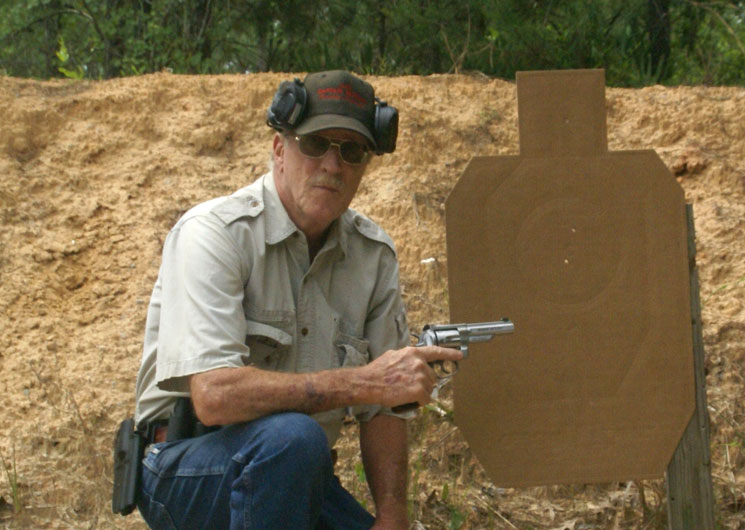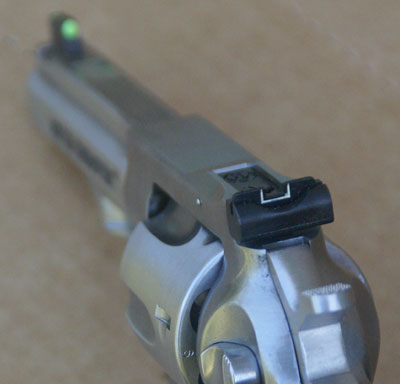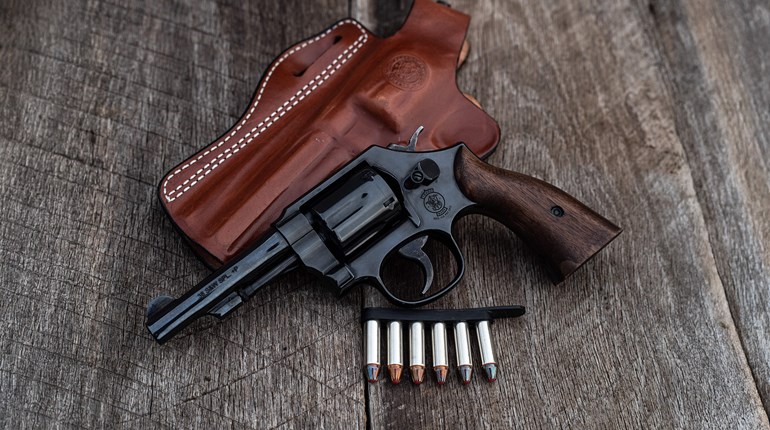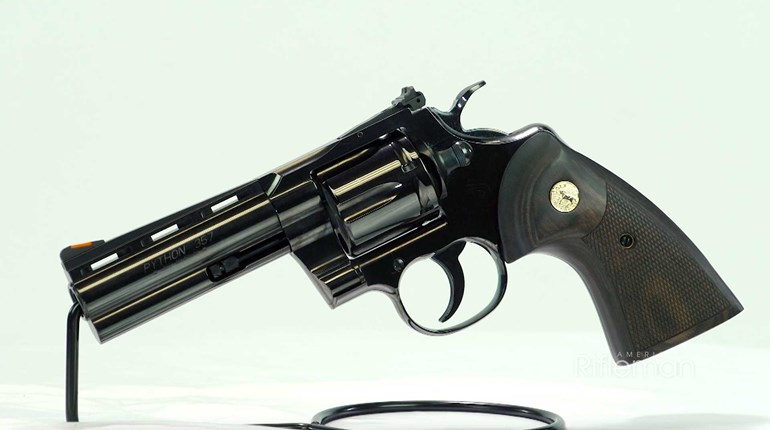
 Introduced in 1985, the Ruger GP-100 double action (DA) revolver was an improved replacement for their Ruger Security Six. It has since earned a well-deserved reputation as sturdy, reliable and accurate.
Introduced in 1985, the Ruger GP-100 double action (DA) revolver was an improved replacement for their Ruger Security Six. It has since earned a well-deserved reputation as sturdy, reliable and accurate.Those are important qualities in a revolver used for action pistol games. Rapid double action shooting has the cylinder spinning like an airplane propeller, with significant wear on the bolt and bolt-stop notches. Add to that the slam bang opening and closing of the cylinder on reloads, the pounding on the ejector rod, and you’ll batter a competition revolver far faster than one used for leisurely trips to the range; where most shooting is done single action (SA) and the cylinder is opened lovingly to extract the fired brass.
The GP-100 handles that abuse well. I have one that went almost 40,000 rounds over eight years (most of it shooting 125+P Power Factor ammo) before it needed a tune up. Yet, the GP-100 is often overlooked by many competitive shooters.
I’ve discussed this often with my old friend, Ken Jorgensen (Ruger’s director of media relations and shooting sports), and when he told me that Ruger was considering bringing out a competition version I was all ears … and mouth. Ken is an experienced revolver shooter and we talked about a number of changes that would make the gun more appealing. In January 2014, Ruger introduced their Match Champion.
It was well thought out in all respects—except one—it had fixed sights. I was surprised and Ken was also. But he promised me he would lobby hard for an adjustable sight version, and true to his word it arrived one year later, in January 2015.
The Gun

null
Among my suggestions were that the chamber mouths be chamfered and the chambers polished. These are aftermarket actions that serious revolver competitors will send their guns to a smith to have done, so why not do it at the factory and save the shooter the added expense? I also suggested that the trigger be reshaped to a smooth radius that doesn’t bite the finger in rapid DA shooting. I was gratified to see that all of those changes were incorporated.
The standard GP-100 action is strong and simple to smooth up. Ruger made that easier by adding shims on the trigger and hammer, as well as polishing the hammer strut. The resulting trigger pull is very smooth in the DA mode and crisp, with virtually no creep in the SA mode.
Unfortunately, the trigger pulls were heavy, like other guns leaving factories today. The DA pull was over 12 pounds, and the single action pull measured 4.5 pounds. In today’s litigious world, lawyers have more say on trigger pull weights than competitors do. That, however, is easy to change.
Both Wolff Gun Springs and Wilson Combat make inexpensive ($10-$12) drop in spring kits for the GP-100. With a little polishing on the internals, the nine-pound hammer spring and the eight-pound trigger return spring produced a buttery-smooth DA pull of less than eight pounds on the original Match Champion; with enough hammer force to light off any primer from CCI, Federal, Winchester or Remington.
The grips are Hogue walnut with checkered side panels. Some shooters will like them and some won’t. That’s normal for upper level revolver competitors, and it’s a rare one that hasn’t gone through several sets of aftermarket grips to find the one that provides the perfect fit to get them into the Master or Expert class. Revolver grips are a very personal thing.
All of the above features are available on both the original Match Champion and the new adjustable sight model. The difference is the adjustable sights. They make a solid gun a true competition gun.
Like the original Match Champion the front sight is dovetailed into the barrel rib. It’s a fiber optic mount taking a .060 rod (green is supplied). The mount protects the rod from damage, but the rod is easily replaceable. The rear sight is Ruger’s standard adjustable model with a white outline blade.
Whether one is shooting 125+P Power Factor loads in USPSA, 105 PF loads in IDPA, 120 PF loads in ICORE, or really “powder puff” loads in Steel Challenge, the adjustable sights will get them on target.
On The Range
I selected two factory loads commonly used in competition – .38 Special +P Speer Lawman 158 grain (it normally makes the 125 Power Factor required for USPSA Minor) and Federal American Eagle 130 grain full metal jacket, (which sometimes meets the 105 Power Factor required in IDPA). I also used two of my match hand loads—a .38 Special 158 grain lead round nose (IDPA) and a 147 grain Xtreme plated round nose loaded in a Long Colt case (ICORE)—that have performed well in my other GP-100s. I added the Remington .357 Magnum 125 grain Golden Saber load, since a .357 gun makes a fine home defense tool when not shooting matches, and this is one of the lesser recoiling factory loads.

null
Subsequent accuracy tests were conducted from a sandbag rest at 25 yards. See the chart below for the results. One thing I quickly noted was that all six chambers were properly aligned and the rounds grouped in uniform clusters. The GP-100 has always exhibited excellent accuracy, whether using jacketed, plated or lead loads, and the Match Champion seems to be no exception. Subsequent DA work on multiple targets showed the gun had plenty of accuracy, and an inexpensive spring kit will produce a lighter trigger pull.
That would make the new Ruger Match Champion ready to run in any game. And with a MSRP of $929, it’s not an overly expensive way to get in on the action.



































